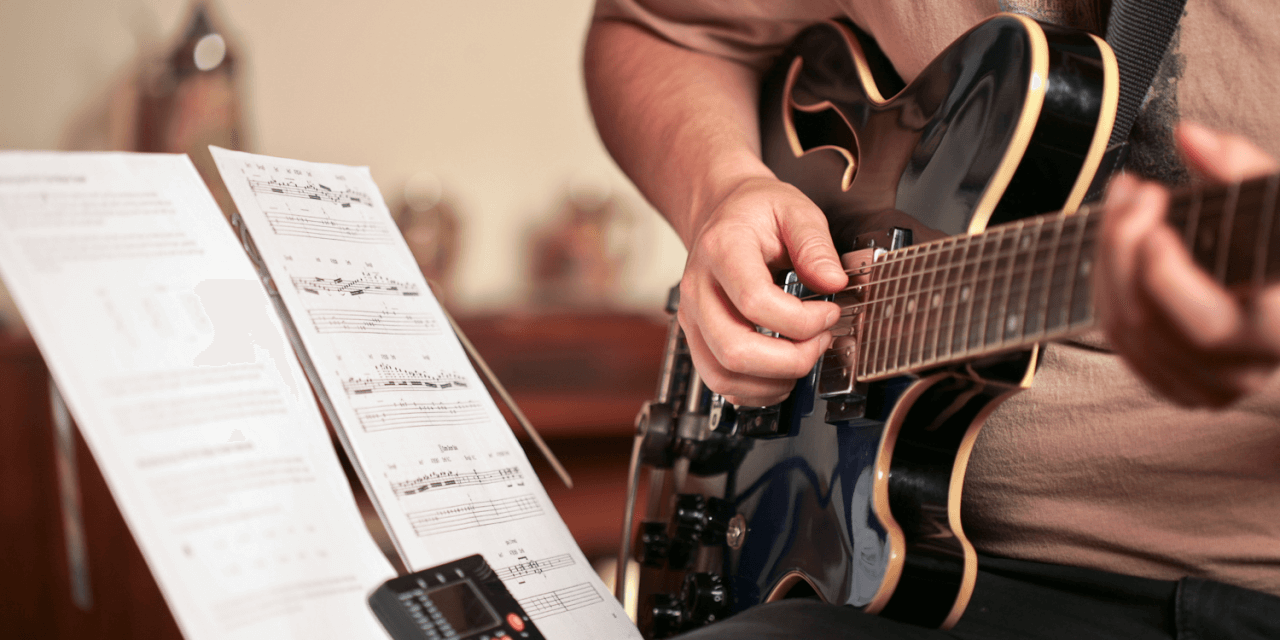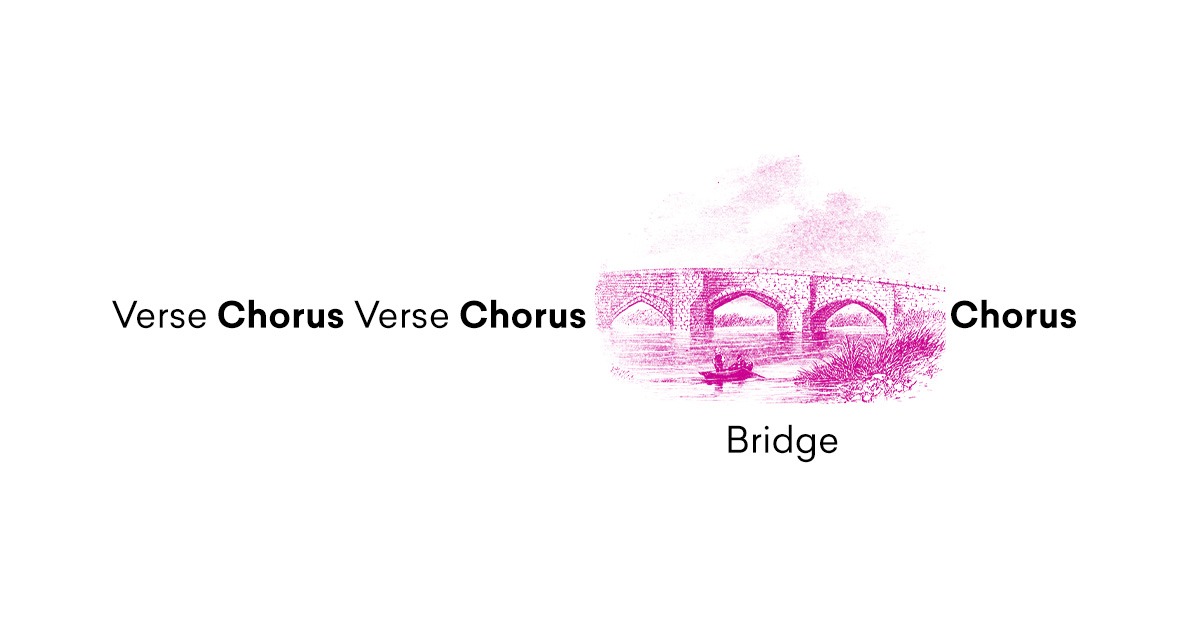Following a formula in your songwriting structure could help with creating parameters for your creativity.
However, sometimes that formula needs a pattern interrupt to make or launch tension and tie everything together.
Simply utilizing a strict intro-verse-chorus-verse-chorus-outro formula could sound repetitive and even jarring at times.
That is where the bridge comes in handy.
In this guide, we will check out how to write a song with a bridge in your song structure.
You will study some creative methods to use bridges and how to make a more cohesive track.
What’s a bridge in music?
In music, the bridge is a musical passage that connects a section to another part of a song. Bridges are most frequently used to connect the second chorus to the third verse (or chorus) and follow a VCVCBV format.
Bridges make the second transition from chorus to verse more fascinating and help to reduce repetitive and possibly jarring transitions between verse and chorus.
Often the bridge is used to launch tension built up during the chorus, however, relying on the track a bridge can be used to build up more tension.
How to write a bridge section
A bridge section could add the important contrast that keeps your song from feeling too repetitive.
In case your song structure needs more variation, a bridge can be the solution.
The bridge isn’t where a song ends, it’s used to make a path to wherever the track ultimately ends up.
Often bridges use changes in rhythm, dynamics, or instrumentation to build tension towards the chorus, or pre-chorus part.
However, bridges could also strip down the arrangement and decrease the dynamics to launch tension after an intense chorus.
Bridges are sometimes instrumental or utilize a countering vocal part or variation on the track’s vocal hook.
This could be a method of giving the vocalist a break after a difficult passage or merely a method of bringing out a contrast with new sounds in the arrangement.
The main question most songwriters grapple with is what to put in a bridge.
While there are no rules as to what exactly a bridge should include, the main point of any bridge is to be different from the verse and chorus.
Still, the bridge needs to connect the ideas in the verse and chorus in some way.
A heavy and pulsing build-up can be just as fascinating as an easy breakdown of the arrangement. Bridge sections could even work as a short solo section, instead of getting the soloist play over the verse.
That shredding guitar section before the song returns to its original ideas in the third verse could be an essential and memorable part of a track.
Music bridge examples
There’s plenty of music bridge examples in prevalent music, many songwriters use them in their tracks.
Here are some particularly famous bridge examples:
1. Good Vibrations – The Beach Boys
Beginning around 1:40 till 2:58 in the video below Brian Wilson demonstrates his songwriting prowess by dropping an enormous bridge part.
The chorus suddenly shifts into several completely different sections that function different rhythms, some background vocals, new some instruments (together with a jaw harp!).
The bridge continues right into a second part with a break down that makes use of an organ, shaker, melodica, and counter vocals.
This is enough to make plenty of tension before triumphantly returning to the chorus which is followed by an equally unusual and leftfield outro.
This track is a good example of a bridge that breaks the rules however still achieves the purpose of driving the track to an intense final chorus.
2. Oops!… I Did It Again – Britney Spears
If you need a really clear example of what a bridge sounds and how it could be a really necessary part of a track, Oops!… I Did It Once more is a good instance.
After the second chorus, the bridge goes into a funkier part that goes as far as breaking down into a cinematic spoken-word moment.
Then the music changes key one step up, and transitions to the pre-chorus creating plenty of launch with its higher key and an epic gospel-style choir.
3. In Da Club – 50 Cent
Sure, bridges are used in hip-hop music too.
At 2:25 In Da Club switches to a slower more punchy flow and uses a climbing orchestral french horn sample.
This makes just enough tension to nicely loop back to the second verse where 50 Cent’s flow returns to its usual intensity.
Beyond the bridge
The bridge is a very common tool in songwriting, however, that does not mean every track requires a bridge.
You have the creative license to use one or not.
Similar to Brian Wilson did, you could throw all the rules out of the window and turn your bridge into something completely crazy, unique and different.
Strip the entire track down to the bare vocals with an acapella part.
Change into an odd time signature or switch up the rhythm completely.
Dissolve the track into a noisy ambient breakdown.
Bit crush the instrumentation and replace your drums with vintage TR-909 samples to offer your track a video game soundtrack style sound.
How the bridge (or any part of your track) works is up to you since you’re free to do whatever you want!


